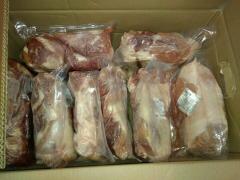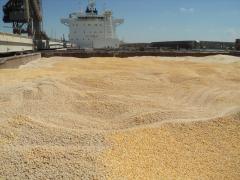Karnal Bunt of Wheat
Fungal disease of Wheat
Karnal bunt is a fungal disease of wheat, durum wheat, and triticale (a hybrid of wheat and rye). Typically, only a portion of the kernel is affected. Climatic conditions determine the extent of the disease.
Impact of Karnal Bunt
Although the overall crop losses caused by Karnal bunt are not known to be severe, the disease has quarantine significance and thus impacts grain crops.
Detection of Karnal Bunt
The disease cannot be easily detected in plants growing in the field: the grain must be removed from the head and examined.
The grain inspector should be very careful in order not to leave Karnal Bunt damage unnoticed. When inspecting a parcel of cargo the inspector should take half of the handfull of grains and rub it between his palms - if the cargo is infected with karnal bunt the inspector will detect specific fishy smell.
When checking crops for Karnal bunt, the inspector should look for bunted kernels that are fragile, dark in color, and fishy smelling. The kernel usually remains whole, although part of the germ may be eroded. Cracks in the surface reveal a black powdery spore mass within the endosperm at the embryo end of the kernel or along the kernel groove.
How Karnal Bunt Spreads
Karnal bunt is spread mainly by the planting of infected seeds. Infection occurs during the flowering stage of the host plant, when its developing ovary comes into contact with infectious sporidia, a stage in the lifecycle of the pathogen Tilletia indica. The ideal conditions for infection are cool weather, rainfall, and high humidity at the time of heading of wheat. In soil, the spores may be able to survive as long as 5 years.
The spores can be carried on a variety of surfaces of plants and plant parts, seeds, soil, elevators, buildings, farm equipment, tools, and even vehicles.

Karnal Bunt
Symptoms of Kanal Bunt (Tilletia indica) infection on wheat seed.
1. Healthy wheat seed. 2. "Tip" infection. 3. More advanced tip infection. 4. Advanced infection.
5. "Canoe" symptom hollowing out interior of seed.
Based on USDA publication.














